Is there life on Mars? That question has been on the minds of scientists and lay people alike for a very long time. Nineteenth century Italian astronomer Giovanni Schiaparelli claimed to have observed linear patterns on the planet’s surface that he called canali, unfortunately mistranslated into English as canals, that led to a belief that they were the products of intelligent beings on Mars. Although that concept fell out of favor among scientists in the 20th century, the idea of sentient beings on Mars persisted in popular culture. With little concrete information about surface conditions on the Red Planet, even some scientists into the 1960s believed Mars might be hospitable to at least some form of primitive extraterrestrial life.
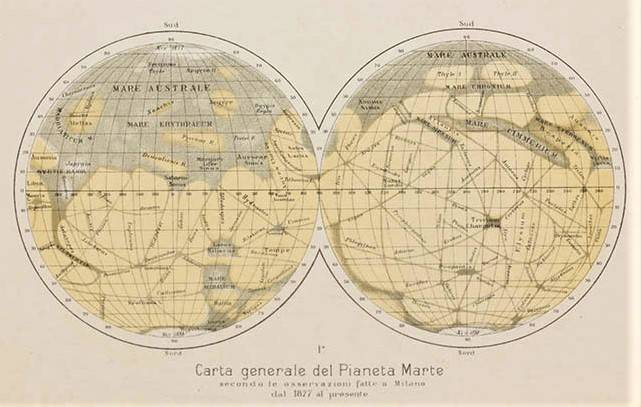
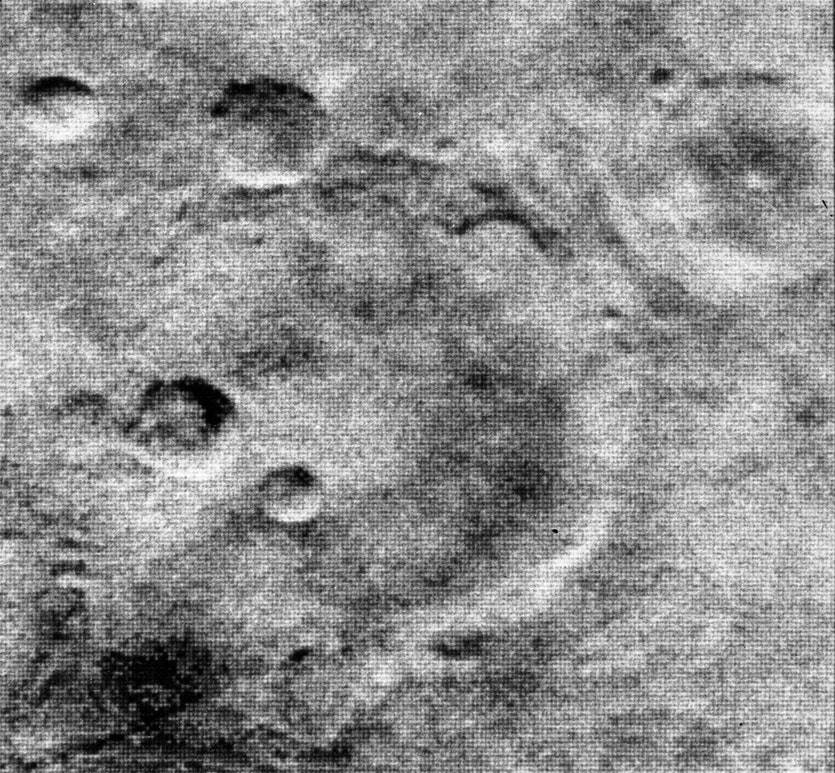
Left: Diagram by Schiaparelli showing his observations of canali.
Right: The highest resolution of the Mariner 4 photographs showing a cratered surface.
Those hopes were dashed in 1965 when Mariner 4 snapped 22 photographs of Mars as it flew by the planet, revealing a heavily cratered surface resembling the Moon, and its instruments indicated a surface temperature around -100oC and an atmospheric pressure around 1% that at Earth’s sea level. Two additional flybys by Mariner 6 and 7 in 1969 did little to raise scientists’ optimism. However, Mariner 9 entered orbit around Mars in November 1971, observing the planet from that vantage point until August 1972. The spacecraft discovered many surface features that indicated that at least sometime in its past Mars was geologically active and photographed features that could have been caused by flowing liquid. The discoveries revolutionized our perception of Mars and gave hope that perhaps at some time in its history it had conditions favorable for life.
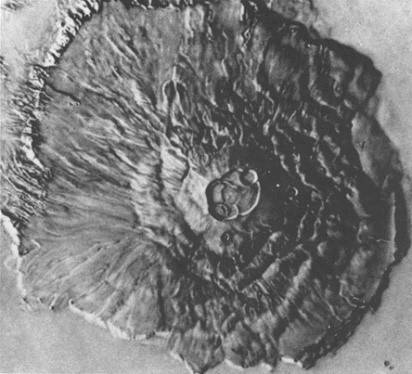
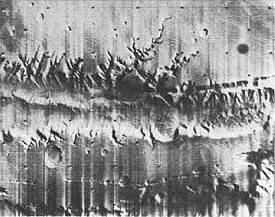
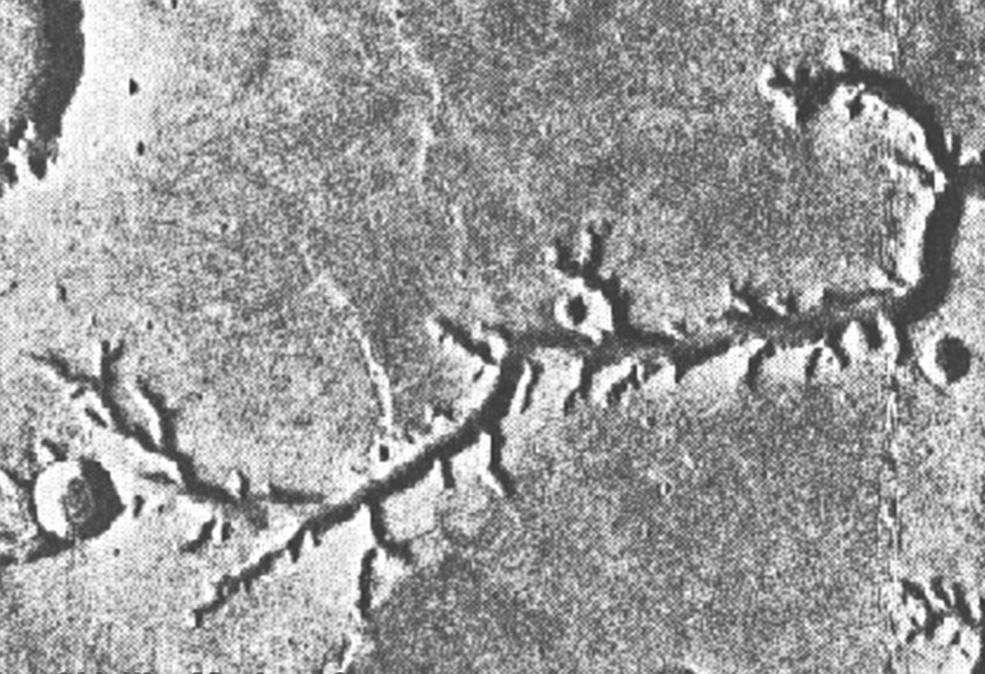
Three views of Mars from Mariner 9: Olympus Mons, left, an Arizona-sized shield volcano; Valles Marineris,
a canyon that would stretch across the United States; and Nirgal Vallis, right, resembling a river and its tributaries
The next step in Mars exploration involved placing landers on the surface to examine its properties up close and search for possible signs of present or past life. The Soviet Union attempted four landings in the early 1970s but unfortunately none met with any success. In 1971, Mars 2’s lander crashed, Mars 3’s soft-landed but did not return any useful data, and in 1974 Mars 6’s lander also crashed while Mars 7’s missed the planet entirely due to its retro-rocket failing to fire. NASA’s Langley Research Center in Hampton, Virginia, managed the Viking project to develop twin spacecraft each consisting of an orbiter, based on the Mariner 9 spacecraft built by the Jet Propulsion Laboratory (JPL), in Pasadena, California, and a lander, built by Martin Marietta under contract to NASA Langley while JPL handled the operations of the spacecraft once in flight. The primary mission objectives of the Vikings were to place two orbiters around Mars and two landers on its surface in 1976 to obtain high resolution images of the Martian surface, characterize the structure and composition of the atmosphere and surface, and search for evidence of life. The orbiters would carry the landers into orbit around Mars before releasing them to make soft landings at predetermined sites on the planet. The orbiters carried sophisticated equipment to take high-resolution images of the planet while the landers carried cameras for imagery, instruments to study the Martian surface and atmosphere, and sophisticated instruments to detect possible signs of present or past life on the planet. The orbiters and landers were expected to function for approximately 90 days.
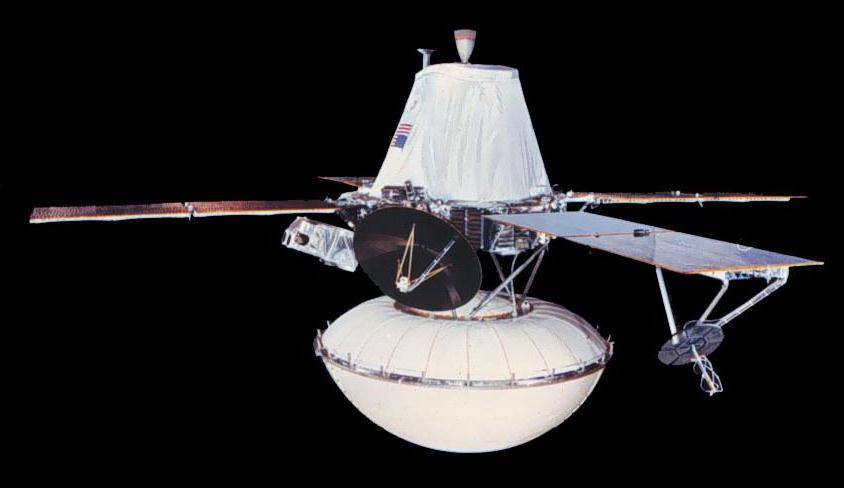
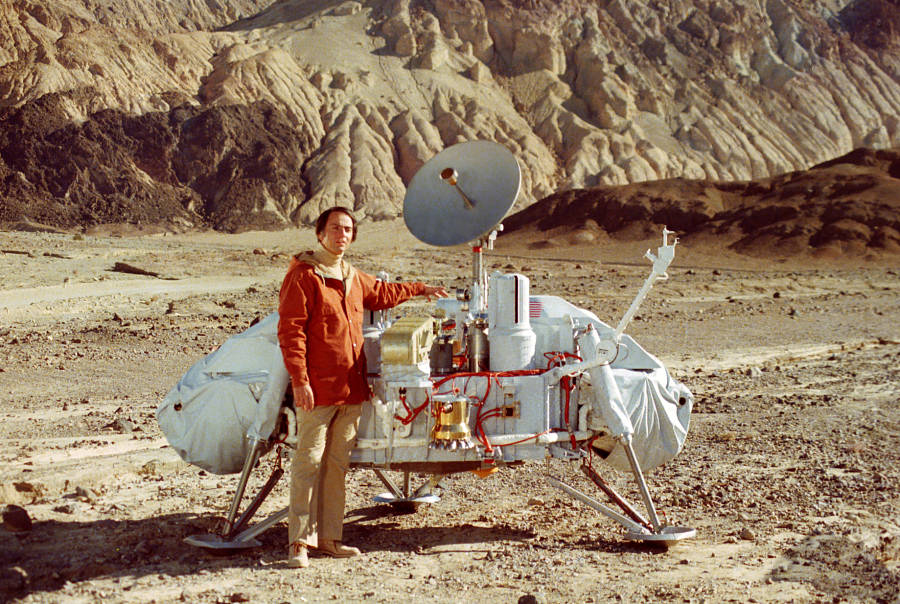
Left: Image of the Viking spacecraft, with the lander encased in the bioshield, at bottom.
Right: Cornell University astronomer Carl Sagan stands next to a model of a Viking lander
to provide scale.
Each Viking spacecraft carried a suite of instruments to accomplish its scientific mission at Mars. Instruments on the orbiters included an imaging system consisting of two cameras, an infrared spectrometer to map water in Mars’ upper atmosphere, and an infrared radiometer for thermal mapping. The lander’s aeroshell carried two instruments, a retarding potential analyzer and an upper atmosphere mass spectrometer, as well as pressure, temperature, and density sensors to take measurements of the Martian atmosphere during the descent. At the time the landers were the most sophisticated planetary spacecraft launched. Each carried two cameras as part of its imaging system, a seismometer, an x-ray fluorescence spectrometer, a weather instrument package to monitor temperature, pressure, and wind velocity, and a biological laboratory.
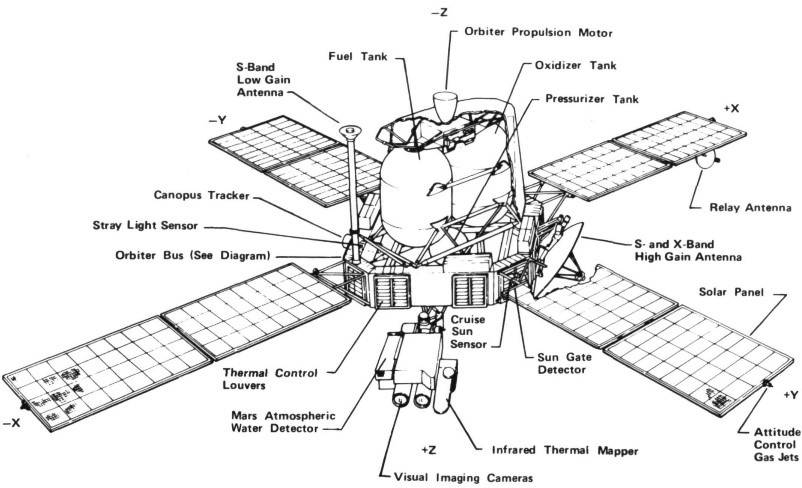
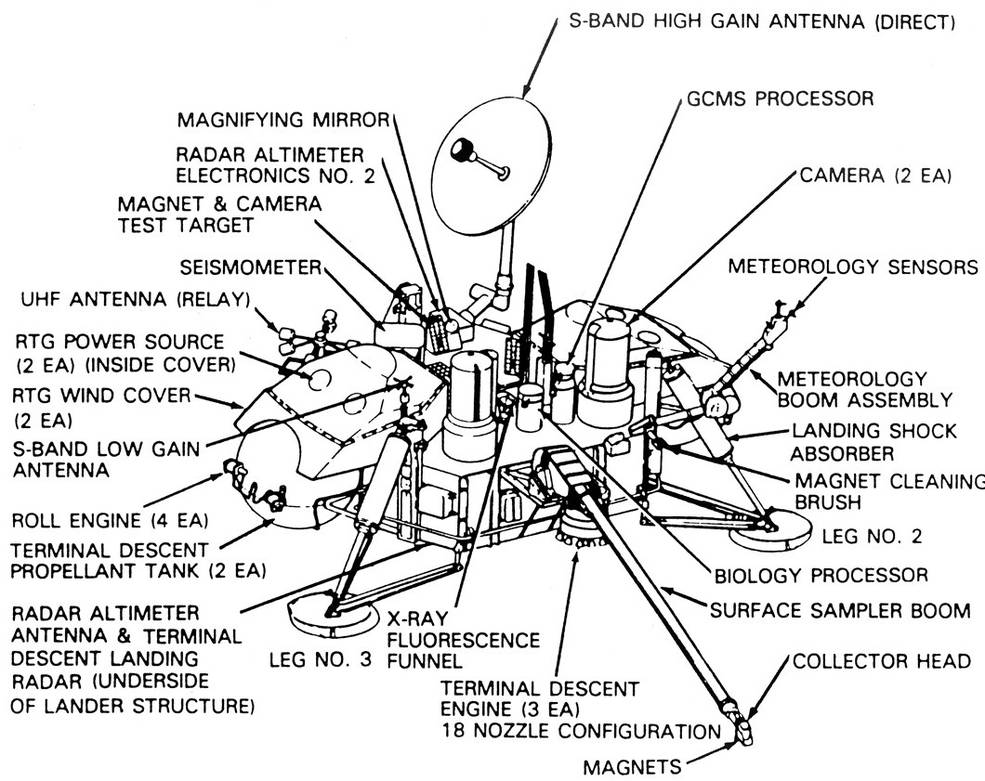
Left: Schematic drawing of the Viking orbiter detailing its components.
Right: Schematic drawing of the Viking lander detailing its components.
The biology package consisted of four experiments. The gas chromatograph mass spectrometer was designed to look for any organic compounds that might be present in Martian soil samples. The gas exchange experiment looked for gases given off by a sample of Martian soil incubated in a mix of organic and inorganic nutrients, essentially looking for products of metabolism by any microorganisms. In the labeled release experiment, a drop of a nutrient solution tagged with a 14C label was placed on a soil sample and the air monitored for the release of any 14CO2, a sign of metabolism. The pyrolytic release experiment placed 14C labeled gasses in a chamber with Martian soil, and after a few days of incubation the soil was baked and detectors looked for signs of any labeled gas that would be evidence that organisms in the soil had incorporated them in a process such as photosynthesis. Each lander also carried a remote sampler arm to take soil samples and deposit them into the biology instruments.
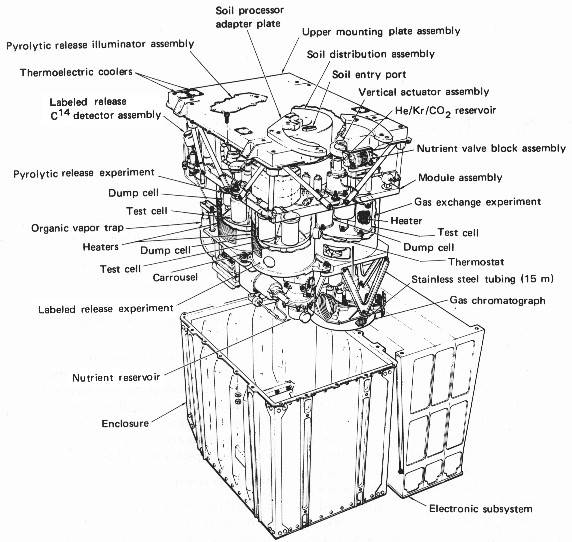
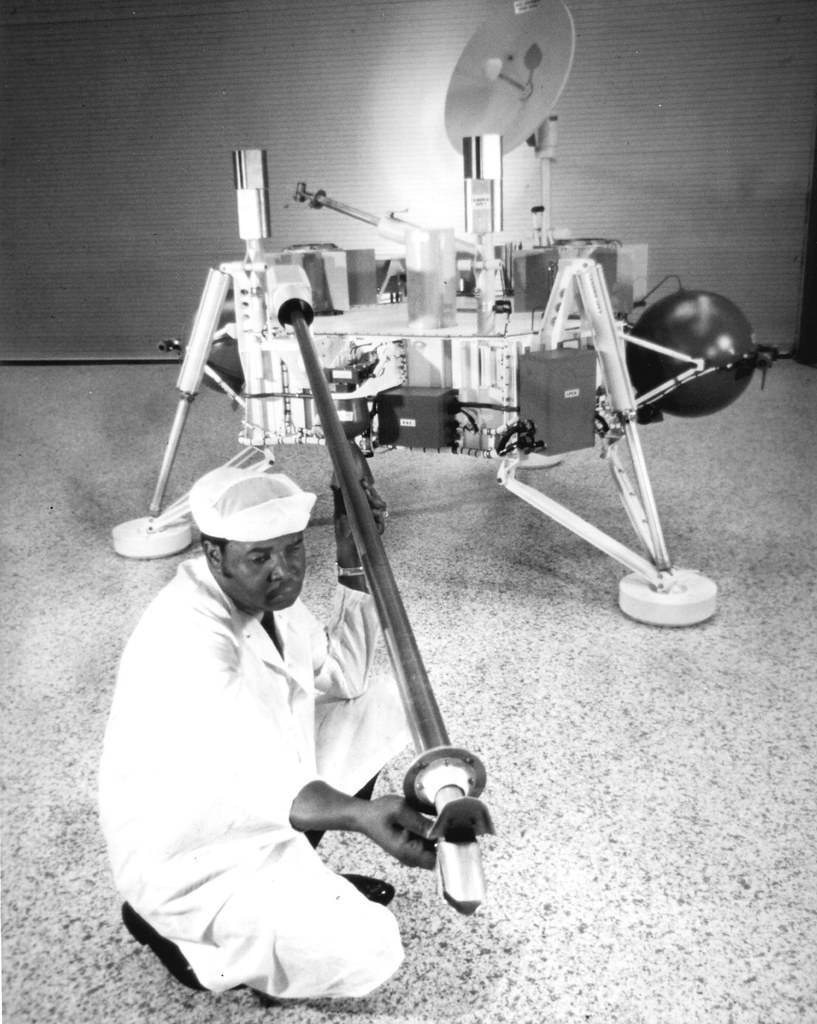
Left: Schematic diagram of the Viking biology package.
Right: JPL technician demonstrating the scoop at the end of the Viking
lander robot arm.
To reach the surface of Mars after separating from their orbiters, the landers’ seven-minute entry, descent and landing was assisted first by the aeroshell to enter the upper layers of the planet’s atmosphere, followed by deployment of a supersonic parachute at an altitude of four miles, and finally by three retro-rockets fired at a height of 5,000 feet to achieve a soft landing at about 4.5 miles per hour. Because of the possibility that Mars harbored some form of life that could be harmed by any terrestrial microorganisms carried by the spacecraft, the Viking landers had to meet the most stringent planetary protection requirements imposed on any U.S. spacecraft. Additionally, since the landers were tasked with looking for signs of life, scientists needed to be sure that if any were detected they were due to indigenous biology and not imported from Earth. For this reason, the lander and its aeroshell were encased inside a pressurized bioshield and the entire assembly sterilized in a nitrogen gas environment at a temperature of 232oF for 40 hours. For several years, engineers at JPL oversaw the study of more than 40,000 parts of 232 types of materials to find those that would survive the sterilization process to ensure the proper functioning of the landers’ systems and science instruments.
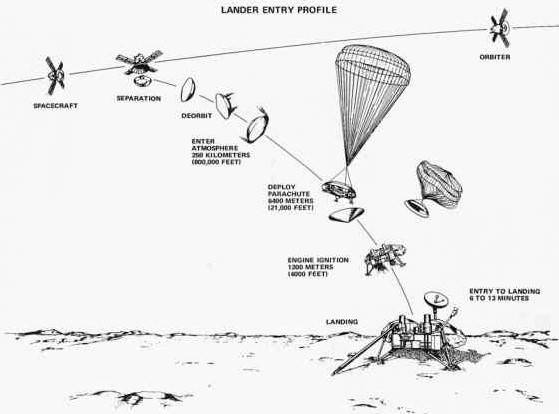
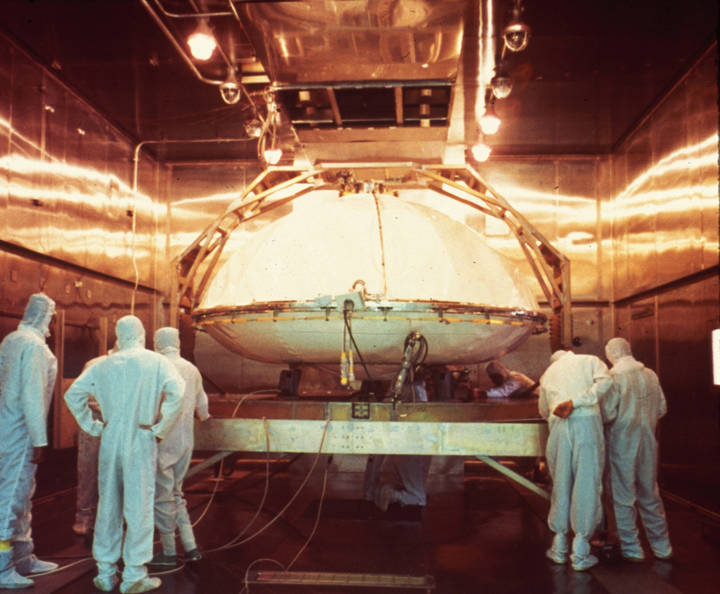
Left: Schematic of the Viking lander’s entry, descent, and landing profile.
Right: Workers at NASA’s Kennedy Space Center prepare the Viking 1 lander encased in
its bioshield for its sterilization.
The Viking spacecraft, at 7,776 pounds fully fueled the heaviest planetary spacecraft up to that time launched by the United States, required the most powerful rocket in America’s fleet, the Titan IIIE with a Centaur upper stage. Viking 1 took off from Launch Complex 41 at Cape Canaveral Air Force Station on Aug. 20, 1975, to begin its 304-day cruise to the Red Planet, followed by Viking 2 on Sept. 9 to begin its 320-day voyage. On June 19, 1976, Viking 1 entered an elliptical orbit around Mars. On July 20, by coincidence the seventh anniversary of the Apollo 11 Moon landing, the Viking 1 lander separated from the orbiter and began its descent to the surface, making a soft landing in the Chryse Planitia region of Mars. Within five minutes it began sending back its first photograph of the landing site. Viking 2 entered orbit around Mars on July 25 and the lander made its touchdown in Utopia Planitia on Sept. 3.
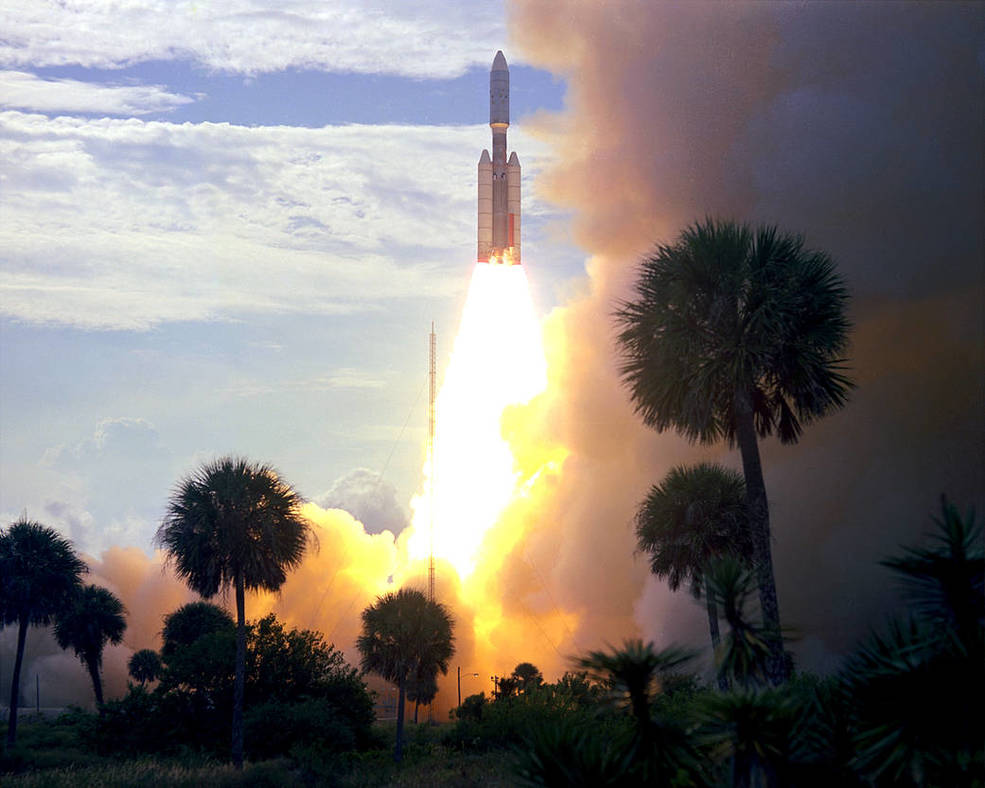
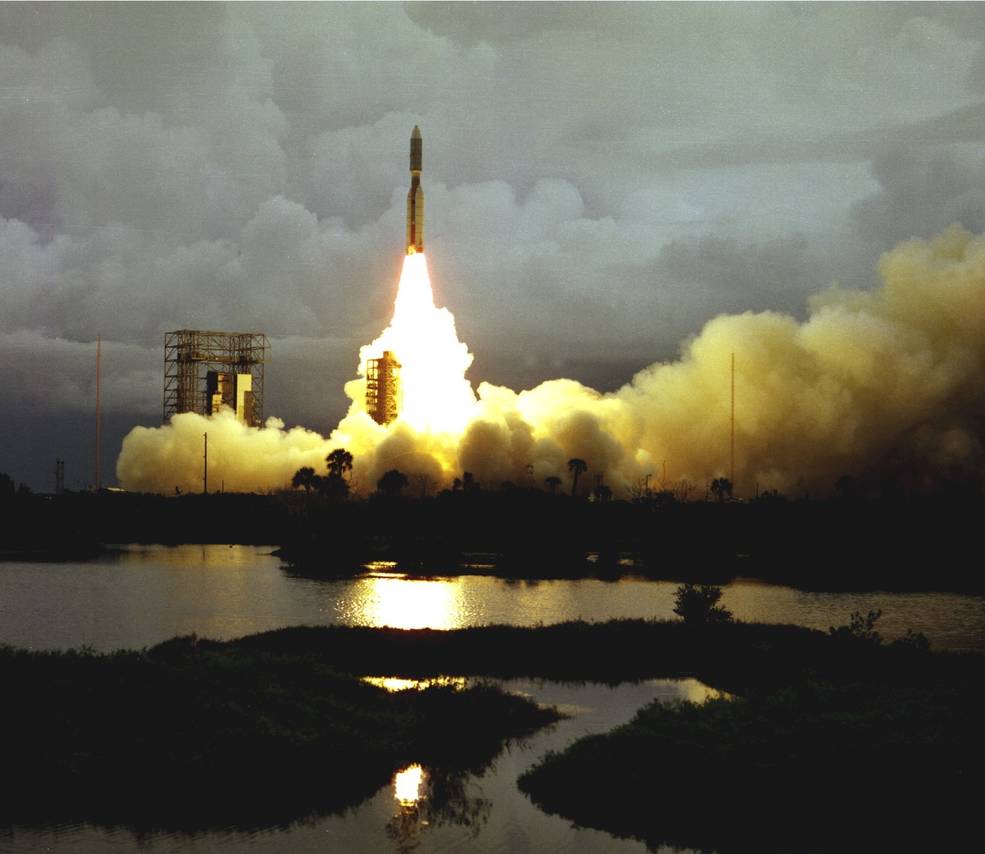
Launches of the Viking spacecraft: Viking 1, left, and Viking 2.
Both orbiters and landers far exceeded their expected 90-day lifetimes in their scientific exploration of Mars, vastly increasing our knowledge of the planet, its atmosphere, and its surface. The Viking 1 and 2 orbiters continued their missions until Aug. 17, 1980, and July 24, 1978, respectively, in total returning 52,663 images of Mars, mapping 97% of its surface at a resolution of 300 meters. The Viking 1 and 2 landers continued monitoring weather changes at the surface until Nov. 11, 1982, and April 12, 1980, respectively, together returning 4,500 photographs from the two landing sites. The Viking 1 lander held the record for the longest operating spacecraft on the surface of Mars, 2307 Earth days (more than six years) or 2245 Martian sols, until May 19, 2010, when the Opportunity rover surpassed it.
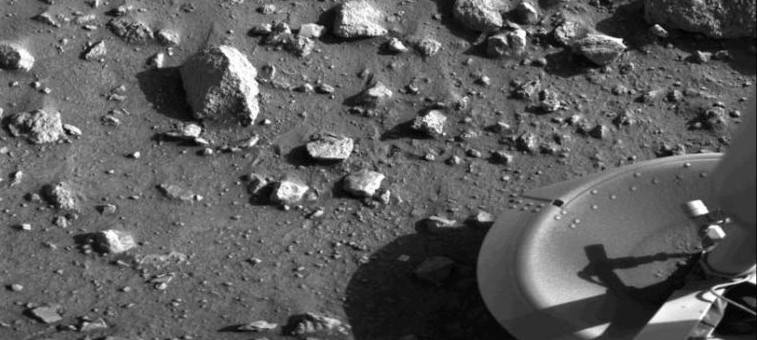
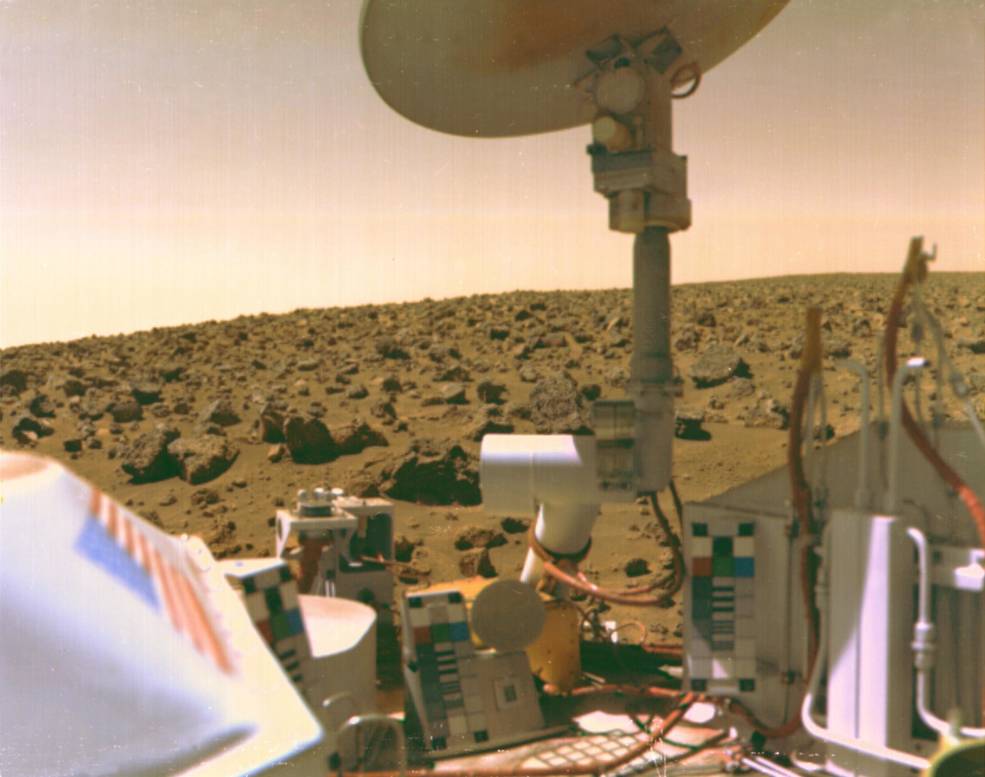
Left: The first photograph ever returned from the surface of Mars, by the Viking 1 lander, including
one of its footpads. Right: Photograph of the Viking 2 landing site including parts of the spacecraft.
To be continued…


























